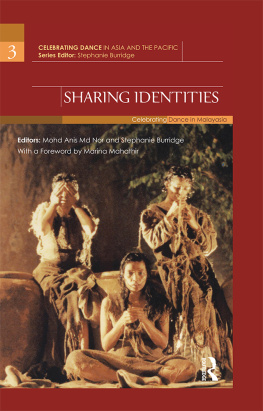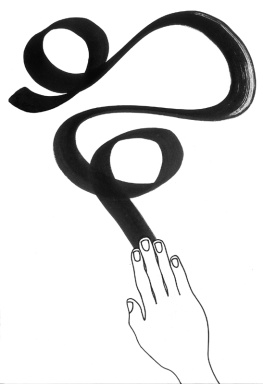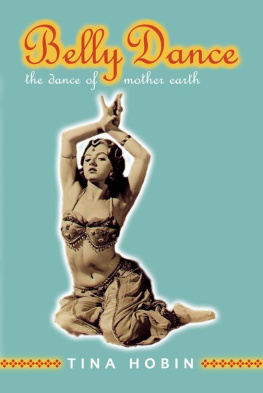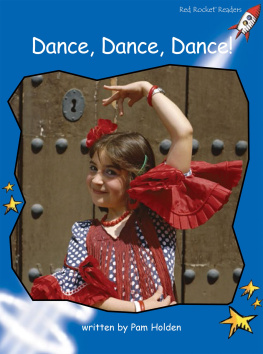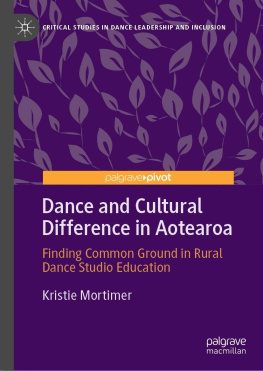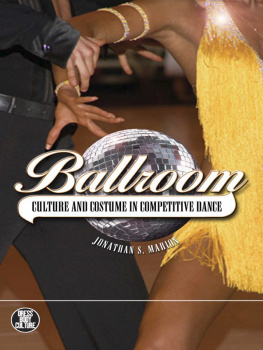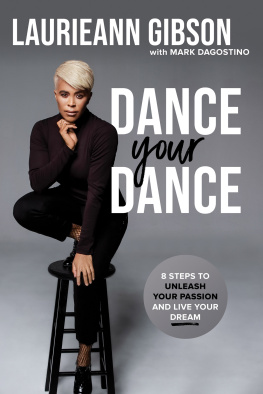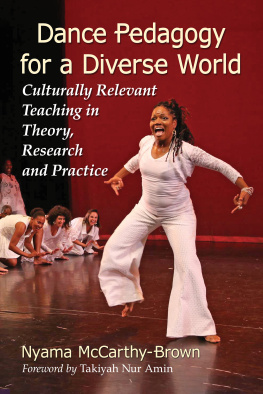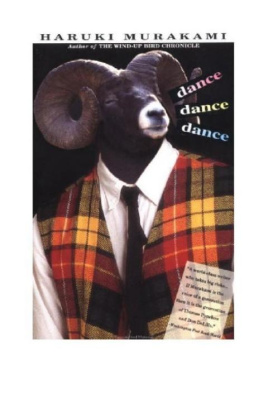Sharing Identities
Celebrating Dance in Asia and the Pacific
Series Editor: Stephanie Burridge
Celebrating Dance in Asia and the Pacific is a series that presents the views of eminent scholars, journalists and commentators alongside the voices of a new generation of choreographers working from tradition to create new forms of expression in contemporary dance. It documents and celebrates these artistic journeys that work within the framework of rich and complex cultural heritages. Future titles in this series include Australia, Taiwan, New Zealand and the Pacific. The series is published by Routledge in India and supported by the World Dance Alliance Asia Pacific.
Also in this Series
Beyond the Apsara: Celebrating Dance in Cambodia
(Eds) Stephanie Burridge and Fred Frumberg
ISBN 978-0-415-56445-8
Traversing Tradition: Celebrating Dance in India
(Eds) Urmimala Sarkar Munsi and Stephanie Burridge
ISBN 978-0-415-61709-3
Sharing Identities
Celebrating Dance in Malaysia
Editors
Mohd Anis Md Nor
Stephanie Burridge
First published 2011 in India
by Routledge
912915 Tolstoy House, 1517 Tolstoy Marg, Connaught Place, New Delhi 110 001
Simultaneously published in the UK
by Routledge
2 Park Square, Milton Park, Abingdon, Oxfordshire OX14 4RN
First issued in paperback 2015
Routledge is an imprint of the Taylor & Francis Group, an informa business
2011 Mohd Anis Md Nor and Stephanie Burridge
Typeset by
Star Compugraphics Private Limited
5, CSC, Near City Apartments
Vasundhara Enclave
Delhi 110 096
All rights reserved. No part of this book may be reproduced or utilised in any form or by any electronic, mechanical or other means, now known or hereafter invented, including photocopying and recording, or in any information storage and retrieval system without permission in writing from the publishers.
British Library Cataloguing-in-Publication Data
A catalogue record of this book is available from the British Library
ISBN-13: 978-1-138-65999-5 (pbk)
ISBN-13: 978-0-415-67836-0 (hbk)
Contents
Marina Mahathir
Stephanie Burridge
Mohd Anis Md Nor and Stephanie Burridge
Marion DCruz
Mohamed Tharuwat Ismail Bakti and Mohd Anis Md Nor
Mohd Anis Md Nor
Revathi Murugappan
Bilqis Hijjas
Joseph Gonzales
Leng Poh Gee
Premalatha Thiagarajan
Mumtaz Begum Aboo Backer
Jacqueline Pugh-Kitingan
Su-Ling Choy
Curated by Joseph Gonzales
The strategic negotiation of the various social, economic and political pressures... illustrates the transnationalist trend which increasingly marks the work of contemporary choreographers from Malaysia.
Bilqis Hijjas
Malay classical dance is extremely difficult to master. The actual physical movements are not difficult, but the in-depth rasa is extremely difficult to embody... where the physical and the ethereal converge.
Marion DCruz
I would like Indian classical dance to appeal to the urban youth. I would like classical dance forms to be relatable, approachable and easy to watch and to understand. Thats why I tried out playing with the expressive aspect of Indian classical dance, because rasa is universal.
January Low
I believe that there is a way of dancing and choreographing that is the Malaysian style. This can possibly be seen as the new forms that are emerging from Malaysia are different from the rest of the world.
Jay Jen Loo
My choreography begins with a spark, an idea, or an image and then involves an intense period of improvisation followed by careful structuring... The most vital is to realize my vision, impact the audience and create work about what matters to me, as an artist and citizen of this country.
Joseph Gonzales
I believe that a student must be an empty vessel into which knowledge is poured every day. The spirit of humility will encourage learning to all levels and in every situation. I believe that dance is for all the community. Dance is for everybody.
Vincent Tan Lian Ho
Dance is an expression of the soul through the mind and body. It is important for dancer/choreographer to be able to express his feelings through dance to bare ones soul through the choreography so that it resonates with the audience.
Umesh Shetty
All my works are rooted in (these) traditions but I do not think that they are bound by these traditions or that this limits my artistic choices. In fact, I find it extremely exciting to explore the possibilities of contemporary interpretations in choreography using traditional dance material...
Suhaimi Magi
This reversal of conventional ideas and performeraudience relationship has made me brave and keeps me exploring non-conventional spaces. I explore space with my dancers like taking them out to the open fields or streets, barefoot in the tropical heat to see how it influences their movements.
Shafirul Azmi Suhaimi
Marina Mahathir
In these fractious times, Malaysians often look back in nostalgia at the good old days when we all got along better. And while it is comforting to romanticize that past, on culture I have different memories.
I went to a convent school and was taught by both lay teachers and nuns. It was a good school in many ways and I treasure my years, from kindergarten all the way up to Form 3, there. But because in my small town Muslim parents were wary of sending their daughters to a Catholic school, I was one of the very few Malay girls there.
This did not bother me at all until I went to boarding school where I found myself surrounded by only Malay girls. Whatever one thinks of our mono-racial boarding schools, in the culture department I had a shock. Back in convent school, the only dance I ever learnt was folk dance. This was essentially Western in nature, although of indeterminate origin. Once, for a public sports function, we performed a can-can dance which required us to wear blue satin bloomers.
It was only when I went to boarding school that I learnt any Malay dances at all. To me, this was a revelation. How could I have been kept away from my own dance culture, even the simplest Joget? At that school, I learnt many different forms of Malay dance and, for the first time, felt some connection to my own culture. And instead of being an onerous thing, my culture was, in fact, fun.
Today, I wonder if the good old days were as good as we remembered them when our own culture was so absent from our education, even if it was good in all other aspects. How could we live in Asia, especially in a multicultural one like ours, and have so little contact with our own myriad cultures?
And indeed, Malaysia has so much to offer to the dance world. From the gentle swayings and graceful fingers of the Mak Yong to the intricate gestures and expressions of the Bharatanatyam to the folk dances of Sabah and Sarawak, we have dances that are varied, intricate and colourful. But how little we know about them, and therefore how little the rest of the world knows about them too!

